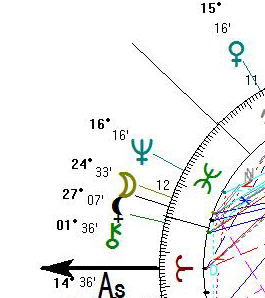|
Brain cells
Brain cells are found in well-organized groups; they communicate constantly through long ranging connections; there are 100,000,000,000 of them, surrounded by at least 10 times that many supporters, and they are all inside your head - brain cells that is.
Of course there are many different types of cell in the brain; most are concerned with protection and supportive functions like fighting disease and providing the necessary environment for the high maintenance nerve cells (also called neurones). We make sense of the world around us by the collective activity of these nerve cells and in turn they direct our response to that world; violent rage and philosophical insight both begin with nerve cells but how exactly do they work?
Nerve cells and energy.
The essential job of nerve cells is to send and receive messages, a process that uses electricity and intermittent chemical signals. This electrical signaling requires constant pumping of electrical charges between the inside and outside of the nerve cells; to do this the brain uses a disproportionately large amount of energy compared to its size. The movement of electrical charges is performed by pumps or transporter proteins in the membrane of a cell and these are powered by the energy-rich molecule adenosine triphosphate (ATP) (see this link for an animation of a sodium-potassium pump).
The purpose of all this pumping and transporting is to maintain large imbalances in the distribution of charged particles (ions) between the inside and outside of brain cells. Principally this involves keeping the levels of sodium and calcium inside the cell very low and keeping the level of potassium higher than the outside. In addition to producing large differences in concentration between inside and outside a cell, this distribution of ions causes an electrical potential difference - the inside of a brain cell is electrically negative by about, seventy thousandths of a volt (70 millivolts). It doesn’t sound much, but when you take into account how thin is the cell membrane - 5 nanometers or 5 thousand millionths of a meter - this translates to an electrical potential gradient of 140,000 volts per centimeter! This is a very powerful electrical field and when combined with large differences in ion concentration, it acts as a powerful driving force to move ions across the cell membrane - but this can't happen until ion channels open.
Ion channels
Ion channels are proteins that sit in the cell membrane, the fatty layer that forms the boundary of a cell. They have a central pore, or channel, which allows ions to move between the inside and outside of the cell. Left to themselves these ions move from areas of high to lower concentration, and this is exactly what happens during the normal operation of brain cells.
When ion channels open, charged particles flood across the membrane divide at a tremendous rate (several thousand each time the channel opens). This image conjures the idea of water flowing from the sluice of a dam, but it is more subtle than that. Instead, imagine a packet of vegetable soup with holes in it; some holes only allow peas to pass through whereas others are selective for carrots and so on. Likewise a nerve cell possesses selective ion channels for the various different ions, so there are sodium channels and potassium channels etc. which all have specific parts to play in the electrical behavior of nerve cells. This rapid movement of electrically charged particles allows brain cells to produce large but brief electrical signals so they can send messages on a millisecond time scale. For example; the basic unit of electrical signaling in the brain cell is a spike of activity lasting about 1 thousandth of a second called an action potential. Action potentials are caused by the sequential opening and closing of sodium channels and potassium channels. Nerve cells can produce a complex and diverse range of electrical signals. This ability stems from the opening and closing of the dozens of varieties of ion channels that have, so far, been discovered.
Two basic methods have evolved for opening ion channels. The first involves sensitivity to the powerful electrical field across the cell membrane. Small changes in this electric field can alter the shape of ion channels pending on the intensity of impact (see
Tides of the Cell), causing a central channel to open - these are the voltage-dependent channels. The second system of control requires the attachment of a specific chemical signal to a receptor or recognition site on an ion channel; this transmits a change in shape to the central channel. This is the way that neurotransmitters work; these small molecules are secreted by nerve cells and transmit the signal in those places where the electrical signal won't work, such as the synapse.
Synapses
Nerve cells make thousands of special connection points with each other called synapses. On one side is a store of neurotransmitter - the chemical signal. On the other side are the specialized ion channels that contain a recognition site for the neurotransmitter. The electrical signal is unable to cross the gap between the two sides of the synapse. When an action potential arrives at the synapse, the voltage change causes calcium channels to open and calcium pours into the cell. This rise in calcium is a trigger for release of neurotransmitters into the synaptic space where they open clusters of ion channels on the other side of the synapse. Different transmitters are used for increasing (glutamate, acetylcholine) or reducing (glycine, gamma-amino-butyric acid) the electrical activity of the recipient cell. The balance between excitatory and inhibitory activity from all synapses will determine the opening of voltage dependent ion channels and another round of electrical activity in the next cell.
~Christian Hoffmann 1/2019 |

Time

Experience of time

Gravity

Tides of the cell
|




